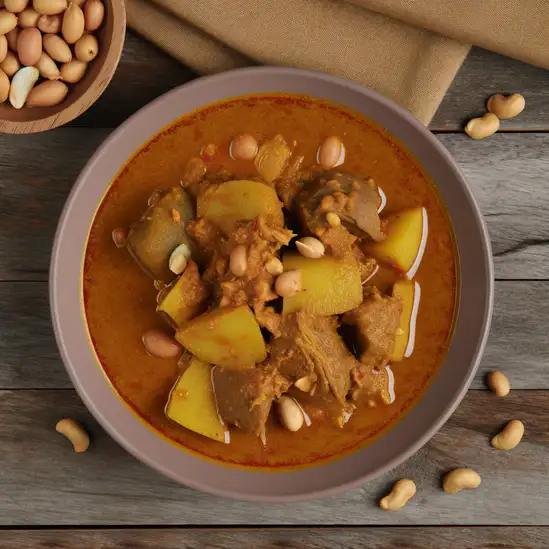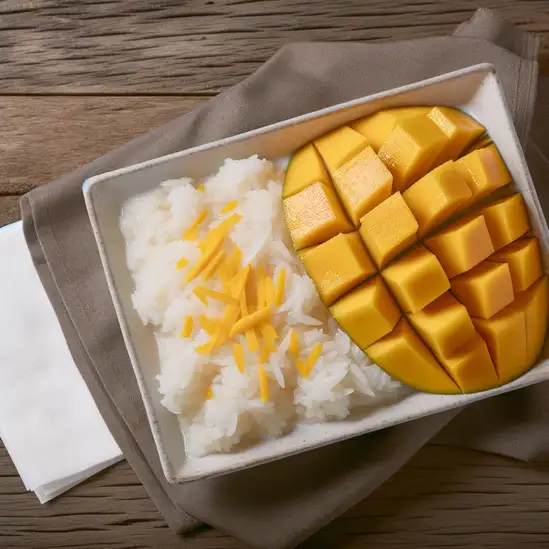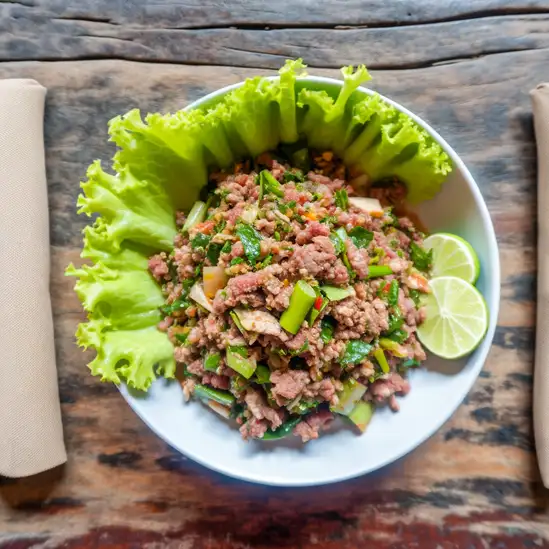


Imagine stepping onto Koh Lipe and instantly feeling like you’ve stumbled into a postcard come to life. The island hums with a laid-back energy that’s both soothing and invigorating—like the gentle sway of palm trees in a warm breeze. The beaches here aren’t just stretches of sand; they’re soft,powdery blankets that invite you to kick off your shoes and sink your toes in. The water is a dazzling turquoise,so clear you can watch colorful fish dart around coral reefs just a few feet from shore. At sunset,the sky bursts into shades of pink and orange,and the air fills with the faint scent of salt and grilled seafood from nearby beachside shacks. Koh Lipe’s charm isn’t just in its natural beauty—it’s in the rhythm of island life. Locals and travelers mingle in open-air cafes where the aroma of fresh Thai spices mingles with the sound of gentle waves and laughter. The island’s culture feels intimate and welcoming,with a mix of Thai and sea gypsy influences that you can taste in every bite of spicy tom yum or sweet mango sticky rice. Night markets buzz with friendly vendors selling handmade crafts and fresh fruit,making every stroll feel like a discovery. What really makes Koh Lipe special is how it balances tranquility with adventure. Whether you’re snorkeling alongside vibrant coral gardens,wandering quiet jungle paths,or simply lounging with a cold coconut in hand,the island wraps you in a warm,easygoing embrace. It’s a place that invites you to slow down,breathe deeply,and soak in the simple joys of island life.
The information on this page is currently being reviewed by Tripkliq and should be used as a guide only
Eng word: Hello
Eng pronunciation: sah-wah-dee
Local language: สวัสดี
Eng word: Goodbye
Eng pronunciation: lah-gon
Local language: ลาก่อน
Eng word: Thank you
Eng pronunciation: khawp-khun
Local language: ขอบคุณ
Eng word: How much
Eng pronunciation: tao-rai
Local language: เท่าไหร่
Eng word: Toilet
Eng pronunciation: hong-nam
Local language: ห้องน้ำ
Eng word: Help me
Eng pronunciation: chuay-duay
Local language: ช่วยด้วย
Eng word: Yes
Eng pronunciation: chai
Local language: ใช่
Eng word: No
Eng pronunciation: mai
Local language: ไม่
Eng word: Excuse me
Eng pronunciation: kaw-toht
Local language: ขอโทษ
Koh Lipe was originally discovered by the Chao Ley, also known as Sea Gypsies, who are indigenous to the Andaman Sea. They have lived on the island for generations, maintaining their unique culture and traditions.
In 1974, Koh Lipe became part of the Tarutao National Marine Park, which helped preserve its natural beauty and marine biodiversity. The park is known for its stunning coral reefs and diverse marine life.
The name 'Koh Lipe' translates to 'Paper Island' in the local Chao Ley language. The island's name reflects its small size and flat terrain, making it easy to navigate.
Tourism in Koh Lipe began to develop in the early 1990s when adventurous backpackers discovered its pristine beaches and clear waters. Since then, it has grown into a popular tourist destination.
The traditional longtail boats used by the Chao Ley are an iconic sight on Koh Lipe. These boats are not only used for fishing but also for transporting tourists around the island and to nearby attractions.
Sunset Beach, one of the three main beaches on Koh Lipe, is famous for its breathtaking sunsets. It has been a favorite spot for both locals and tourists to relax and enjoy the natural beauty.
Koh Lipe's Walking Street is the island's main commercial area, filled with shops, restaurants, and bars. It has become a vibrant hub for tourists to explore local cuisine and buy souvenirs.
Koh Lipe has been actively involved in marine conservation efforts, including coral reef restoration projects and beach clean-ups. These initiatives aim to protect the island's delicate ecosystem.
The waters around Koh Lipe are home to over 25% of the world's tropical fish species. Snorkeling and diving are popular activities, allowing tourists to witness the vibrant underwater world.
In Koh Lipe, the most common Power Adaptor is Type A, Type B, Type C.







A hot and sour soup made with shrimp, lemongrass, kaffir lime leaves, galangal, and chili, known for its bold flavors and aromatic herbs.

A classic Thai stir-fried noodle dish made with rice noodles, eggs, tofu or shrimp, and flavored with tamarind paste, fish sauce, and topped with crushed peanuts.

A spicy green papaya salad that combines shredded papaya, tomatoes, green beans, peanuts, and a tangy dressing made from lime juice, fish sauce, and chili.

A rich and mildly spicy curry made with beef or chicken, potatoes, peanuts, and a blend of spices including cinnamon and cardamom, often served with rice.

A popular Thai dessert made with glutinous rice, fresh mango slices, and drizzled with sweet coconut milk.

A spicy minced meat salad, usually made with chicken or pork, mixed with herbs, lime juice, and roasted rice powder, served with fresh vegetables.

Thai fried rice typically made with jasmine rice, vegetables, and a choice of protein like chicken, shrimp, or crab, often served with lime and cucumber.
Imagine stepping into a place where the air hums with the gentle rhythm of waves lapping against sun-warmed shores,and the scent of salty sea mingles with fragrant street food stalls. That’s Phuket for you—a vibrant island that feels alive in every sense. It’s not just the stunning beaches that grab you,but the way the island pulses with a laid-back energy,where colorful markets buzz with chatter and the aroma of grilled seafood fills the air. Walking through the old town,you’ll find charming Sino-Portuguese buildings painted in pastel hues,their shutters creaking softly in the tropical breeze,while tuk-tuks zip by,adding a playful soundtrack to your explorations.
Phuket’s character is a beautiful blend of tradition and liveliness. Temples with golden spires peek out from lush greenery,inviting quiet moments of reflection,while nearby,night markets burst with life—vendors calling out,sizzling woks,and the sweet tang of mango sticky rice tempting your taste buds. The island’s culture is warm and welcoming,with locals who smile easily and share stories over cups of strong Thai coffee or fresh coconut water.
What makes Phuket truly special is how it wraps you in its embrace—whether you’re watching a fiery sunset from a cliffside bar,diving into crystal-clear waters teeming with vibrant marine life,or simply savoring the spicy kick of a freshly made curry. It’s a place that invites you to slow down,soak in the colors,sounds,and flavors,and leave with a heart full of unforgettable moments.
If you find yourself wandering into Amphoe Mueang Krabi,get ready to be wrapped in a warm embrace of nature and culture that feels both vibrant and soothing. The moment you step into this lively district,the salty tang of the Andaman Sea mingles with the sweet scent of tropical flowers,setting a scene that’s as refreshing as it is inviting. The streets buzz gently with the chatter of locals and the clinking of street food stalls,where the aroma of grilled seafood and spicy herbs teases your senses and promises a feast.
What makes Mueang Krabi truly special is how effortlessly it balances its laid-back island charm with a pulse of authentic Thai life. You’ll find yourself wandering through bustling markets filled with colorful fruits,handmade crafts,and the friendly smiles of vendors eager to share stories. The rhythm of daily life here is unhurried but alive,with monks in saffron robes gliding past ancient temples,and fishermen hauling in their catch against a backdrop of limestone cliffs that rise dramatically from the turquoise waters.
Spend your days exploring hidden coves or kayaking through mangrove forests,and your evenings savoring fresh seafood at a beachside shack while the sun dips low,painting the sky in fiery hues. There’s a genuine warmth in the air—both from the tropical sun and the people—that makes you feel like you’re not just visiting,but truly belonging. Mueang Krabi isn’t just a place to see; it’s a place to feel,taste,and remember long after you’ve left.
If you’re dreaming of a place where nature’s beauty feels like it’s wrapped around you like a warm hug,Langkawi is that kind of magic. The moment you step off the ferry or plane,there’s this gentle tropical breeze carrying the scent of salt and frangipani,instantly calming your mind. The island hums with a laid-back energy—no rush,just the soft rustle of palm leaves and the distant call of exotic birds. It’s the kind of place where time slows down,inviting you to soak in every vibrant detail.
Langkawi’s charm lies in its wild,lush landscapes meeting the turquoise sea. Imagine hiking through dense rainforests where sunlight filters through the canopy,dappling the forest floor,or standing on the Sky Bridge,suspended high above the treetops,with panoramic views that steal your breath away. The beaches aren’t just pretty—they’re alive with the sound of gentle waves lapping against powdery white sand,and the taste of fresh seafood grilled right on the beach,bursting with smoky,spicy flavors.
What really makes Langkawi special is its blend of cultures and stories. You’ll find local markets buzzing with friendly vendors offering tropical fruits and handmade crafts,while the island’s legends and history whisper through ancient temples and mangrove forests. It’s a place where you can lose yourself in nature,savor authentic Malay flavors,and feel the genuine warmth of the people. Trust me,Langkawi isn’t just a destination—it’s a feeling you’ll want to carry with you long after you leave.
If you ever find yourself craving a place where the buzz of city life meets the laid-back charm of southern Thailand,Hat Yai is where you want to be. The moment you step into its lively streets,you’re greeted by a vibrant mix of sounds—the chatter of street vendors,the sizzle of woks tossing fresh seafood,and the occasional melody of a local song drifting from a nearby café. It’s a city that hums with energy but never feels rushed,like it’s inviting you to slow down and soak it all in.
Walking through Hat Yai,your senses come alive. The air carries the spicy aroma of grilled satay mingling with the sweet scent of tropical fruits from bustling markets. Brightly colored stalls overflow with everything from exotic durians to handmade crafts,and the friendly vendors greet you with warm smiles that make you feel instantly welcome. At night,the city transforms—neon signs flicker to life,and street food stalls become the heart of social life,where locals and travelers alike gather over plates of crispy fried chicken and bowls of rich,tangy tom yum soup.
What really sets Hat Yai apart is its unique blend of cultures. You’ll notice influences from Thai,Chinese,and Malay traditions woven into the city’s food,festivals,and everyday life. It’s a place where temples and mosques stand side by side,and where the warmth of the people makes you feel like you’ve found a second home. If you’re up for an adventure that’s flavorful,friendly,and full of surprises,Hat Yai is waiting to welcome you with open arms.
Imagine stepping into a place where the past and present dance effortlessly together—that’s Penang Island for you. The moment you arrive,there’s this warm,inviting buzz in the air,a mix of bustling street markets,the chatter of locals,and the distant hum of the sea. George Town,the island’s heart,feels like an open-air museum sprinkled with vibrant street art,colonial buildings,and temples that tell stories of centuries gone by. Walking through its narrow lanes,you’ll catch the scent of spices,fresh herbs,and sizzling street food that’s impossible to resist.
Penang’s food scene is legendary,and it’s not just about eating—it’s a full-on sensory adventure. Picture biting into a char kway teow,the smoky wok hei flavor hitting your taste buds,or savoring a bowl of asam laksa,where tangy tamarind broth mingles with fresh fish and mint. Every meal feels like a celebration of the island’s rich multicultural heritage,blending Malay,Chinese,Indian,and even Nyonya influences.
Beyond the city,the island’s lush hills and palm-fringed beaches offer a peaceful contrast to the lively streets. You can hike up Penang Hill for panoramic views or unwind by the shore,feeling the gentle sea breeze. What really stays with you,though,is the genuine warmth of the people—friendly smiles,curious conversations,and a laid-back vibe that makes you want to linger just a little longer. Penang isn’t just a place to visit; it’s a place that invites you to slow down,savor life,and soak in its colorful,flavorful soul.
Bangkok is one of those cities that grabs you the moment you step out into its bustling streets. There’s this electric energy in the air—a mix of honking tuk-tuks,sizzling street food stalls,and the chatter of locals weaving through markets. The city feels alive,like it’s constantly moving and breathing,yet somehow it balances this chaos with moments of serene beauty,like the golden spires of temples catching the afternoon sun or quiet canals reflecting the sky.
Walking through Bangkok,you’ll be hit by a whirlwind of scents:fragrant jasmine from flower vendors,the sharp tang of lemongrass and chili from street carts,and the sweet aroma of mango sticky rice tempting you at every corner. The colors are just as vivid—neon signs flicker alongside traditional wooden shophouses,and monks in saffron robes glide past modern skyscrapers. It’s a city where old and new dance together effortlessly.
What really makes Bangkok special is its warmth and openness. The people here have a genuine kindness that shines through,whether you’re bargaining at Chatuchak Market or sharing a laugh over a bowl of spicy boat noodles. The culture is rich and layered,from the intricate rituals at Wat Pho to the lively festivals that light up the streets. Visiting Bangkok feels like stepping into a story that’s still unfolding,full of surprises and moments that stay with you long after you leave.
Scammers may install skimming devices on ATMs to steal card information from unsuspecting tourists.
Tourists may book a room online that looks luxurious, but upon arrival, the actual accommodation is far below the advertised standard.
Some vendors sell fake ferry or speedboat tickets, leaving tourists stranded or forcing them to buy another ticket.
Scammers may pose as officials and demand fake entrance fees for the Tarutao National Marine Park, which Koh Lipe is part of.
Some agencies may sell fake or overpriced tickets for tours, ferries, or buses, leaving tourists with invalid bookings.
Rental shops may claim that tourists damaged the motorbike or kayak and demand excessive compensation, even if the damage was pre-existing.
Certain restaurants or bars may inflate prices for tourists, especially if the menu lacks clear pricing.
Some boat operators may charge tourists significantly higher prices for short trips, especially if they don't confirm the price beforehand.
Some operators may promise premium snorkeling tours but provide subpar equipment or take tourists to overcrowded or less scenic spots.
Thailand has very strict drug laws, and this applies to Koh Lipe as well. The possession, use, or trafficking of illegal drugs can result in severe penalties, including long prison sentences and even the death penalty for serious offenses. Tourists should avoid any involvement with illegal drugs to avoid severe legal consequences.
In Koh Lipe, as in the rest of Thailand, smoking is regulated by national laws. Smoking is prohibited in indoor public places, public transport, and certain outdoor areas such as beaches. Koh Lipe has designated smoking areas, and tourists should look for these areas to avoid fines. Smoking on the beach is particularly restricted to protect the environment.
Vaping is illegal in Thailand, including Koh Lipe. The import, sale, and possession of e-cigarettes and vaping equipment are banned. Tourists caught with vaping devices can face hefty fines and even imprisonment. It is strongly advised not to bring any vaping equipment into the country.
What are other people saying about Koh Lipe?
Recent Social posts about Koh Lipe
There is nothing to show you for now.